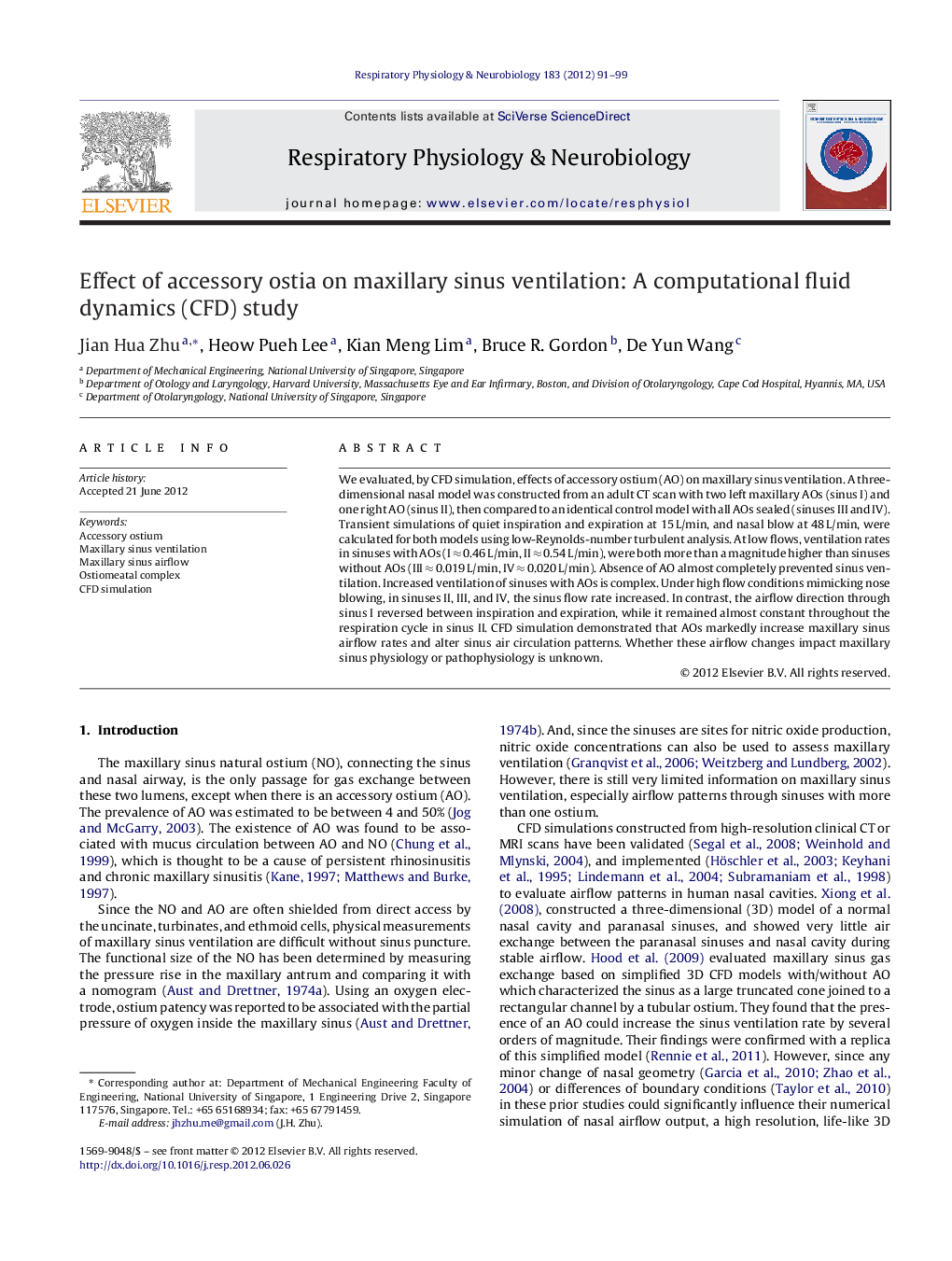| Article ID | Journal | Published Year | Pages | File Type |
|---|---|---|---|---|
| 2847245 | Respiratory Physiology & Neurobiology | 2012 | 9 Pages |
We evaluated, by CFD simulation, effects of accessory ostium (AO) on maxillary sinus ventilation. A three-dimensional nasal model was constructed from an adult CT scan with two left maxillary AOs (sinus I) and one right AO (sinus II), then compared to an identical control model with all AOs sealed (sinuses III and IV). Transient simulations of quiet inspiration and expiration at 15 L/min, and nasal blow at 48 L/min, were calculated for both models using low-Reynolds-number turbulent analysis. At low flows, ventilation rates in sinuses with AOs (I ≈ 0.46 L/min, II ≈ 0.54 L/min), were both more than a magnitude higher than sinuses without AOs (III ≈ 0.019 L/min, IV ≈ 0.020 L/min). Absence of AO almost completely prevented sinus ventilation. Increased ventilation of sinuses with AOs is complex. Under high flow conditions mimicking nose blowing, in sinuses II, III, and IV, the sinus flow rate increased. In contrast, the airflow direction through sinus I reversed between inspiration and expiration, while it remained almost constant throughout the respiration cycle in sinus II. CFD simulation demonstrated that AOs markedly increase maxillary sinus airflow rates and alter sinus air circulation patterns. Whether these airflow changes impact maxillary sinus physiology or pathophysiology is unknown.
► We build two CFD models to evaluate effects of accessory ostium (AO) on maxillary sinus (MS) ventilation. ► We examined the airflow rate through sinus during both respiration at 15 L/min and nasal blow at 40 L/min. ► The existence of AO increased the ventilation rate through MS by more than an order of magnitude compared to MS without AO. ► The presence of two AOs complicates the flow partitioning of the gross MS ventilation among the ostia.
